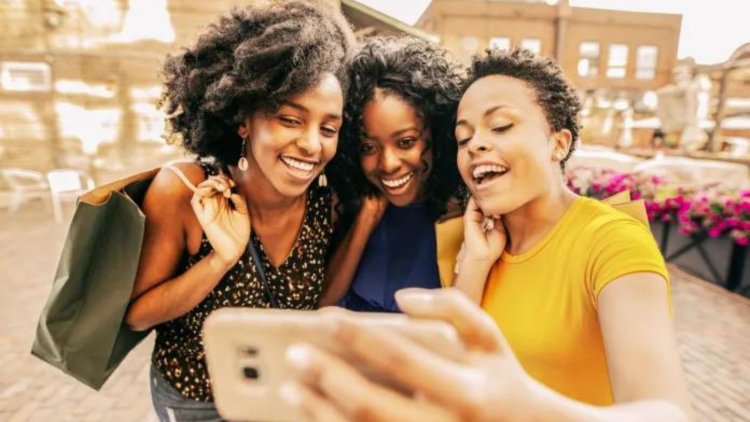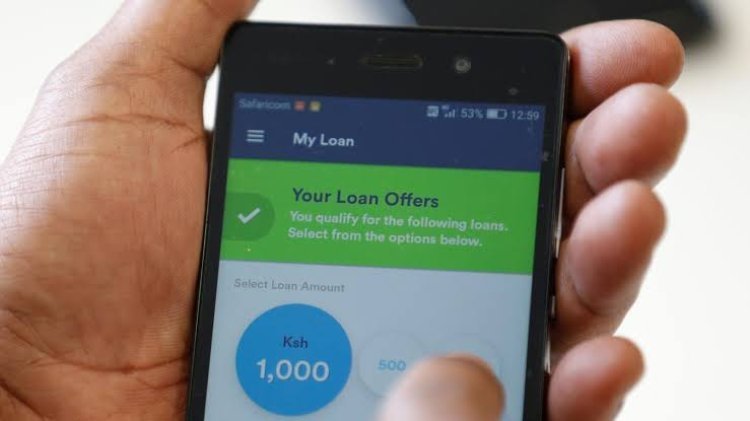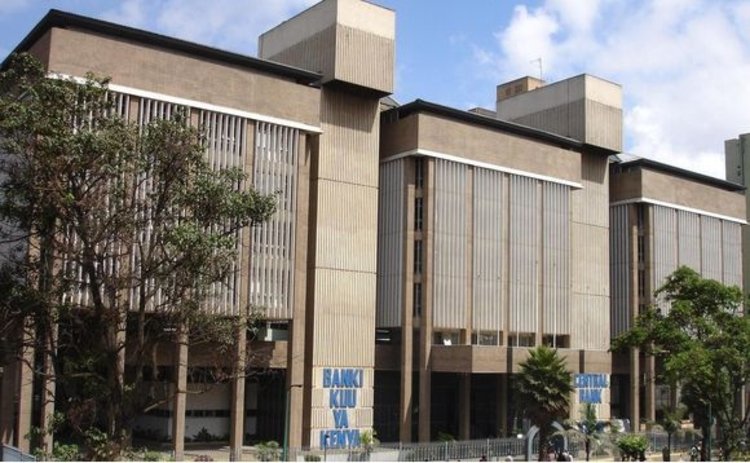Why You Now Need A Selfie To Get A Mobile Loan
Providing a selfie for identity verification is becoming a common part of the KYC (Know Your Customer) processes of financial service providers, especially those offering services online.

The 'selfie' culture, coupled with the popularization of front cameras on smartphones, has changed social culture as we know it and even led to a song by 'The Chainsmokers' going by the same name.
As time has gone by, the selfie has evolved into a real-time requirement for the identity of persons in service-providing companies, including those dealing with money and transactions.
For instance, if you have signed up for online banking or have created an account with app-based digital lenders, there is a likelihood that you may have been required to submit, among other identity verification documents, a selfie.
Providing a selfie for identity verification is becoming a common part of the KYC (Know Your Customer) processes of financial service providers, especially those offering services online.
Digital Credit Providers (DCPs), particularly those licensed by the Central Bank of Kenya (CBK), have started following their counterparts in the banking industry, by introducing selfie identity verification and related technology in their KYC processes.

A person using a mobile loan app. /KENYAN WALLSTREET
Viral Tea examines why these days DCPs need you to verify your identity with a selfie before giving you that loan that you desire:
Why Selfie ID Verification is Becoming the Norm
The growth in financial technology has allowed greater flexibility in how people access financial services. It is now possible to open and operate both current and savings accounts from the comfort of your mobile phone or computer - without ever visiting a bank branch.
Equally, it is commonplace to access credit services, particularly unsecured personal loans now offered in the form of digital loans provided by DCPs, leading telcos, and commercial banks.
The switch to the online financial world has presented opportunities, but also unique challenges - such as identity theft and fraud. Identity theft can be an emotionally stressful situation when you find someone pretending to be you has, for example, taken credit in your name or has siphoned your hard-earned cash.
When Kevin Musau needed a mobile loan from Zenka - one of the first 32 DCPs to be licensed by the Central Bank of Kenya (CBK) - he was surprised to find the requirement for a selfie.
“I was hesitant because I wondered, do they really need my image? Don’t they have my ID already?
“In the digital age, privacy is a concern. I paused to do some research before I could decide whether to complete the application or not. I learned that providing a selfie is a security measure that protects me and my identity,” Musau recalls.
Why Do Banks/DCPs Need Your Selfie
When a bank or a digital lender asks for a selfie in the registration process, it is so that they can compare the image that appears on the ID copy you upload and the selfie image you provide to ensure you are indeed who you say you are. This is done instantaneously using Artificial Intelligence (AI) software with no human intervention.
The selfie adds an additional layer of identity verification in addition to the copy of the National Identification document (ID or passport) since anyone can get a hold of your Lost ID or even a picture of it and open an account or register with a DCP in your name.
It is one of the ways financial institutions offering credit online are using to comply with CBK’s requirement to satisfy themselves of the identity of customers before offering a service.
According to the CBK Prudential Guidelines for Institutions Licensed Under the Banking Act, among other things;
- Any bank offering telephone banking, mobile banking and /or Internet banking should implement procedures to identify and authenticate the customer
- The procedures adopted should confirm the identity as robustly as those for face-to-face verification
- It is for each institution to decide upon which checks to employ.
On the digital lending scene, the CBK (Digital Credit Providers) Regulations, 2022, Regulation 31 states “a digital credit provider shall take reasonable measures to satisfy itself as to the identity of its customers while performing transactions with them.”
Indeed, providing a selfie is in many ways similar to providing a passport-size photo to the bank if you were to follow the traditional route to opening a bank account. Opening an account digitally will then require you to provide all that information from the comfort of your device.
That is why both banks and DCPs (commonly known as digital lenders) are requiring non-face-to-face customers to take pictures of their identity documents and using the provided app/web platform, users are prompted to take and submit a selfie image to accompany these government documents for sufficient identity verification.
Identity Theft
Identity theft is an issue that should not be taken lightly. Someone with bad intentions can represent themselves as you and take a loan they don’t intend to pay, leaving you to bear the consequences.
Consider the story of billionaire Peter Nduati, the founder of Resolution Health, who had been blacklisted because of allegedly defaulting on a Ksh1,000 loan.
It was later established that someone had used his identity information and applied for a digital loan with it and defaulted. This hurt his credit score and almost cost him a loan he was applying for his company, Centric Air.
With con artists becoming more sophisticated by the day, and the use of false and stolen identities still on the rise, mobile app lenders are improving their identity verification processes to prevent such fraudulent activity.
In addition to impersonation, when a stolen identity is used to access financial services fraudulently it can lead to blacklisting, damage to credit score, and lack of access to credit for genuine borrowers.
KYC (Know Your Customer) Processes
Traditionally, for a bank to ascertain your identity, you had to physically enter a banking hall at the nearest branch of your chosen banking partner to open an account. You could not open an account on behalf of someone else.
The bank had to verify that the person opening an account was the one whose image was on the ID - by literally comparing that image against your face - and you also had to submit passport-size photos that the bank representative had to ascertain that indeed are yours. That is, the passport-size photos have to match your face and the image on the ID card.

An image of the Central Bank of Kenya in Nairobi. /FILE
However, things are moving online. Now, banks such as Standard Chartered, Absa, and Diamond Trust Bank have fully online account opening services. In fact, there are now fully digital banks, such as Fingo Africa that launched in Kenya earlier in May 2023 in partnership with Ecobank.
With such digital services - such as opening a digital current/salary account, digital savings account etc. - you do not have to visit a banking hall at all to open an account. You do it virtually.
But how do they ensure that the KYC processes they use physically apply to the online setting? They ask for a digital proof, which includes a picture of your identification card or passport and a real-time selfie, so that they can compare the ID and the selfie to ascertain that, indeed, you are who you say you are.
One of the advantages of improved identity verification is wider access to credit for genuine borrowers. With Zenka, for example, successful selfie verification can make one eligible for a higher credit limit, since the applicant is verifiable and differentiated from a scammer.
How Selfie Verification Works
Before submitting a selfie, one submits their official documentation such as their ID or Passport. Digitally, this is done by taking a picture of the identifying document.
After submitting the ID or Passport, you are prompted to take a selfie. You might be required to take several selfies from different angles depending on the financial service provider.
In addition, you might also be required to take a selfie while holding your ID close to your face.
The copy of the identification document you upload will be checked against the official government database to ensure that it is indeed a valid identification document issued by the government.
Importantly, the image data on your identification document and the image data on your selfie are cross-checked to ensure that both images are of the same person. This is why some financial institutions are asking for selfies since it is possible for someone else to be in possession of another’s identity document.
AI software is used to do this matching with no human intervention. Depending on the financial institution, the selfie will be inspected for liveliness. This is to determine whether the selfie is a real-time image of a real person or if it is a recording or other form of deep fake imagery.
With the proliferation of AI tools, fraudsters can generate fake images and use them to try and gain unlawful access to digital services. Hence, the check for liveliness is essential.
KYC verification is on the rise globally as the push to combat financial fraud to protect consumers gains momentum. Some African startups, including Smile Identity, have been raising tens of millions of dollars in funding to create solutions that help financial institutions better ascertain the identities of their digital customers.






